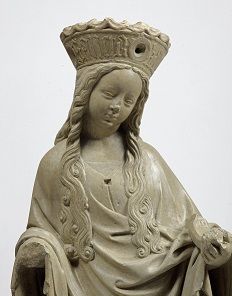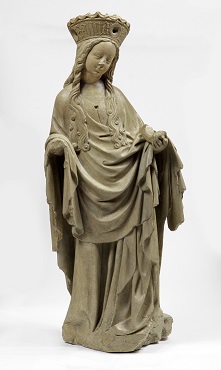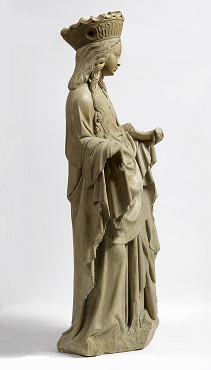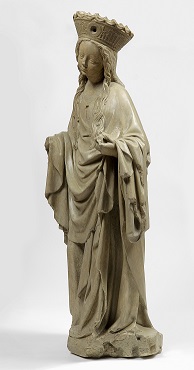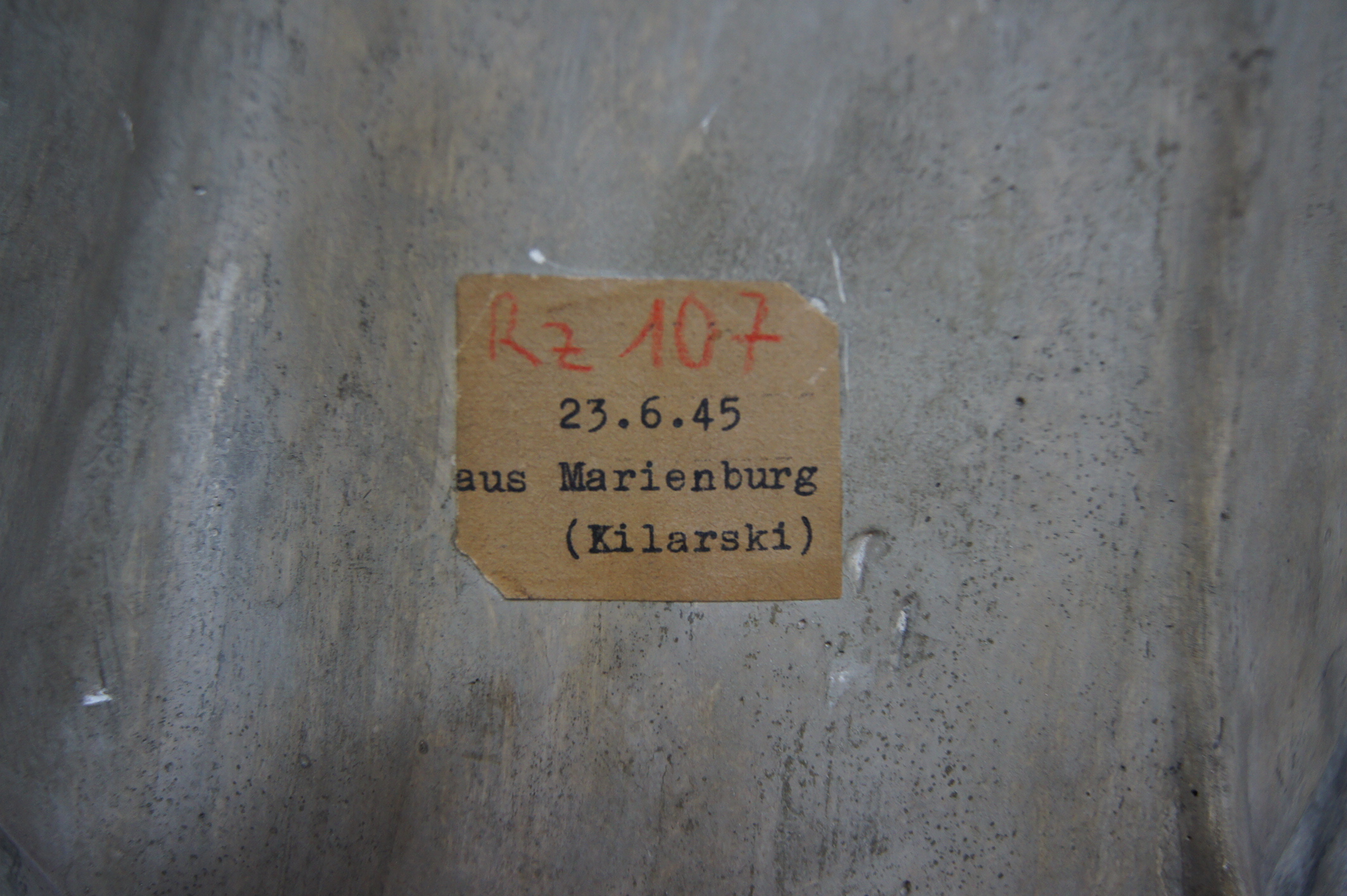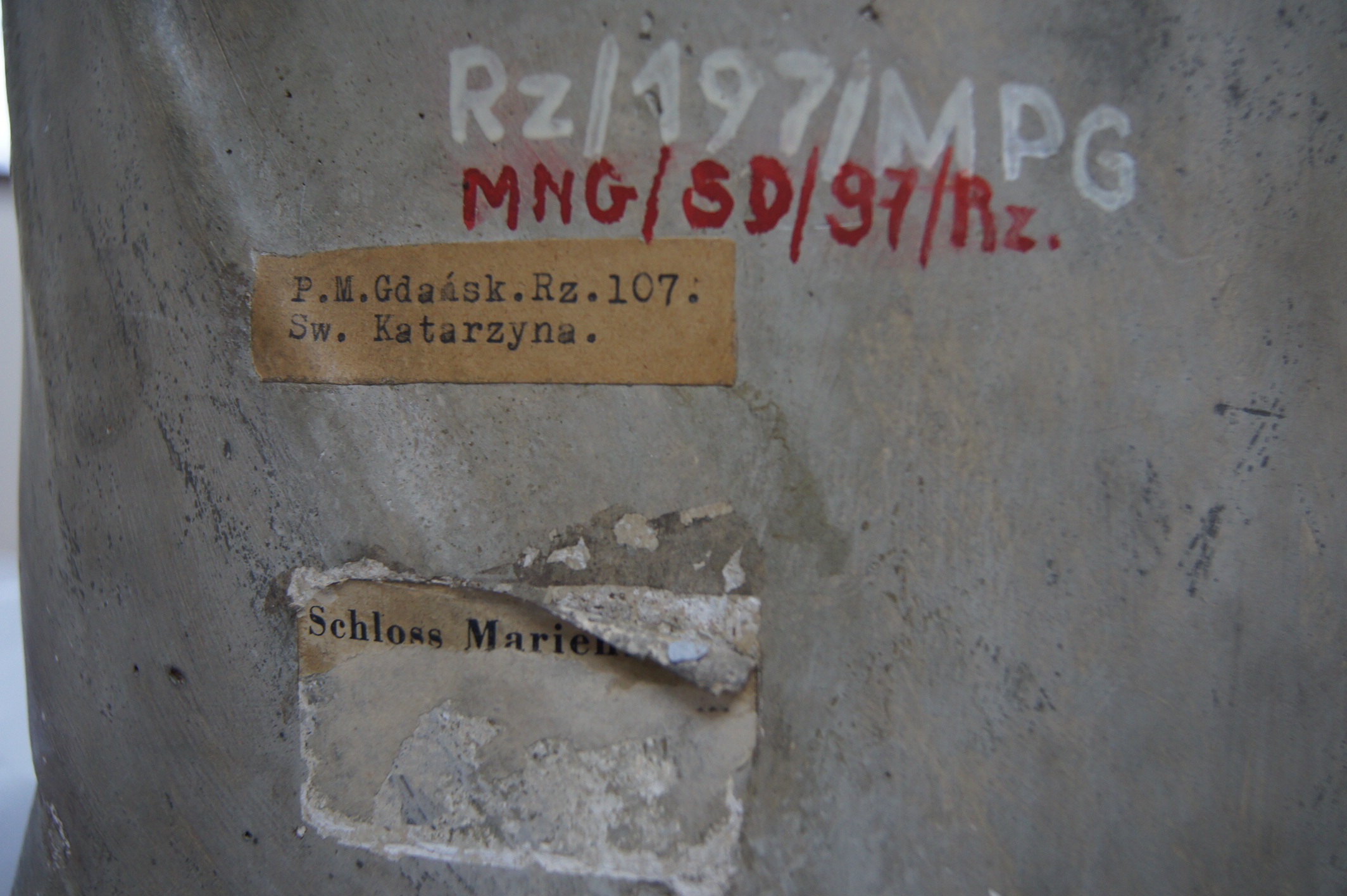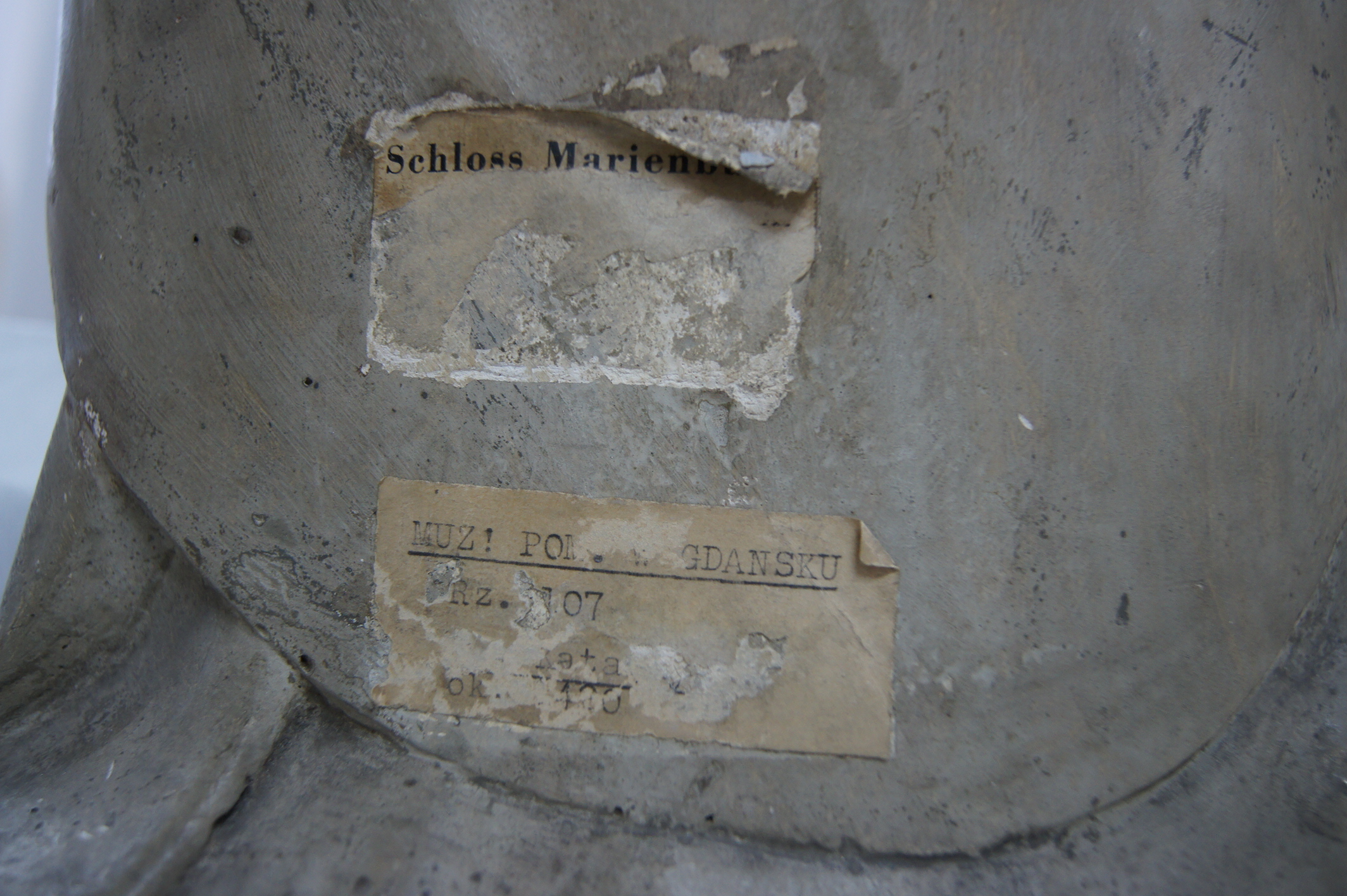Unknown artist
Time of creation: 1900–1930
Technique: casting, patination
Material: plaster mortar dyed in mass
Dimensions: 77x31x19 cm
Provenance: from the collection of plaster copies of the castle in Malbork (?)
Owner since 1945: National Museum in Gdańsk ( inv. no. MNG/SD/97/Rz)
The figure depicts St. Catherine, posed frontally, in counterpost – the weight of the body rests on the left leg, while the right is bent at the knee, the hips are pushed forward, the body is withdrawn, while the head is tilted towards the left shoulder. This gives the silhouette a characteristic, sigmoid shape. The saint is dressed in a trouser dress and a coat fastened at the neck, the right half of which is thrown inside out and supported by both raised hands. The ruffles of the drapery are arranged on the front of the figure in soft bowl-like folds, contrasting with the vertical folds of the dress below. Catherine’s face is round, with a cheerful expression and subtle features. Long wavy hair flows down the shoulders and back, the head is crowned with a high crown with a minuscule inscription on the rim and holes after unpreserved ornaments. In her left hand the saint held an attribute of which only a fragment has survived, identified as a millwheel – the instrument of her martyrdom.
In the context of the collections of Gothic art, gathered before the war in the Malbork Castle, the plaster statue of St. Catherine does not seem to represent significant value. We don’t even know for what purpose it was made – was it supposed to occupy a place in one of the castle chapels, like a number of other copies and pastiches? We do not find it in archival interior photos, nor is it mentioned in the reports on the progress of restoration works. The fact that it was stored in Malbork, at least in 1945, is evidenced by labels and ownership markings on the back, containing inscriptions: “Schloss Marienburg” and “…aus Marienburg (Kilarski) 23.6.45”. On that day, the plaster statue was evacuated from the ruined castle by Jan Kilarski and handed over to the Municipal Museum in Gdańsk (now the National Museum).
The importance of the cast increases, however, if we realize that during the war the original from which it was made was destroyed or lost. And it was a high-class sculpture, dated by researchers in the range of 1400-1420. The place of its original origin is unknown. Until World War II, it was located in the church of St. Nicholas in Cyganek (Żelichowo / Tiegenhagen) near Nowy Dwór Gdański, set in a niche on the northern wall, but it seems unlikely that such an excellent work was associated with a small rural parish from the beginning. Due to the excellent artistic quality of the medieval figure and its distinctiveness from the late Gothic art on the territory of Teutonic Prussia, researchers considered it an import, but variously defined its provenance: as Rhineland (B. Schmid), North German – Lübeck (K.H. Clasen) or Czech (P. Abramowski).
Doubts were also raised by the material from which the figure was made – was it light yellow sandstone or marl limestone with a golden color? This is probably one of the reasons why in the 30s of the twentieth century Gothic sculpture was subjected to research in the Municipal Museum in Gdańsk, including visual inspection under a microscope. Traces of these activities are photographs from the collection of the then curator (later also the director of this institution) Willy Drost, today located in the Archive of the Herder Institute for Historical Research on Central and Eastern Europe (LINK). It was probably on this occasion that the plaster cast was made, which went to Malbork.
After the war, a copy of the figure of St. Catherine of Gypsy was exhibited at the exhibition of Gothic art at the Pomeranian Museum in Gdańsk (since 1972 the National Museum), and was then considered an original made of the so-called artificial stone (screed plaster), eagerly used in the Middle Ages in the area of the Teutonic Order. In 2013, it was deposited with the Castle Museum in Malbork. It is exhibited in the chapel of St. Catherine at the Middle Castle.
(edited by M. Czapska, photo: L. Okoński)

